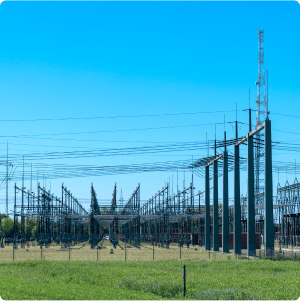The Electrical System Studies and Analysis service involves comprehensive evaluations of the electrical infrastructure of a given facility, either existing or under development, to ensure systems operate reliably, efficiently, safely and legally compliant. In some cases, it involves the analysis of unusual phenomena which could be causing trouble in the facility. Occasionally, business decisions, like implementation of new technologies, equipment and/or services, require information only engineering analyses can provide.
The successful execution of this service combines the use of very advanced engineering tools and software (Matlab, Simulink, ETAP, SKM, DIGSILENT), industry standards (IEEE, IEC, API, NFPA), regulations (NFPA/NEC), and best practices, with the experience of seasoned, licensed electrical engineers.


Typically, the input data necessary for studies and analyses is obtained from engineering design documentation, drawings, archives, manuals, datasheets, nameplates, among others. In many cases it also requires surveying information on site or taking measurements. After all input data is collected, electrical systems are modelled in specialized software, simulations are run, and the results are interpreted by the engineer, with the final product being a report or summary indicating the methodology used, premises, and findings, and how such findings relate with the purpose at hand and applicable standards and regulations.

WHY ARE SYSTEM STUDIES AND ANALYSIS NEEDED?
The Electrical System Studies and Analysis service involves comprehensive evaluations of the electrical infrastructure of a given facility, either existing or under development, to ensure systems operate reliably, efficiently, safely and legally compliant. In some cases, it involves the analysis of unusual phenomena which could be causing trouble in the facility. Occasionally, business decisions, like implementation of new technologies, equipment and/or services, require information only engineering analyses can provide.
The successful execution of this service combines the use of very advanced engineering tools and software (Matlab, Simulink, ETAP, SKM, DIGSILENT), industry standards (IEEE, IEC, API, NFPA), regulations (NFPA/NEC), and best practices, with the experience of seasoned, licensed electrical engineers.
Typically, the input data necessary for studies and analyses is obtained from engineering design documentation, drawings, archives, manuals, datasheets, nameplates, among others. In many cases it also requires surveying information on site or taking measurements. After all input data is collected, electrical systems are modelled in specialized software, simulations are run, and the results are interpreted by the engineer, with the final product being a report or summary indicating the methodology used, premises, and findings, and how such findings relate with the purpose at hand and applicable standards and regulations.
LIKELY USERS

Upstream oil and gas operators and drillers

Downstream refineries and petrochemical plants

Utility, energy and telecommunication facilities

Industrial/commercial facilities
OTHER RELATED SERVICES

Arc flash analysis
Study conducted to assess the potential hazards associated with arc flashes in an electrical system

Artificial intelligence applicability analysis
Evaluation of the potential application of AI techniques to enhance industrial and commercial electrical systems

Decarbonization and energy analysis
Evaluation to incorporate and/or optimize renewable energy sources, energy storage technologies, and other decarbonization strategies within a power system or facility

Load analysis
Assesment of the electrical demands and consumption patterns of a system or facility to optimize power distribution and utilization

Power flow analysis
Examination of the flow of electrical power through a power network which helps to determine voltage levels, power losses, and system stability

Short circuit analysis
Study conducted to assess the behavior and potential consequences of a short circuit in an electrical power system

Protection settings and coordination
Analysis and optimization of the protective devices within an electrical power system, such as relays and circuit breakers, usually aided by specialized software like ETAP and/or SKM

Motor starting and stability
Evaluates the performance of electric motors during startup, considering factors like motor characteristics, mechanical loads, system impedance and voltage drop

Harmonics analysis
Investigates the presence and impact of harmonics in an electrical power system

Grounding systems analysis
Evaluates the performance and safety of the grounding system of a facility.


